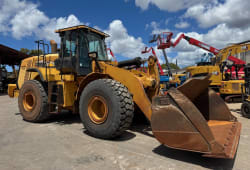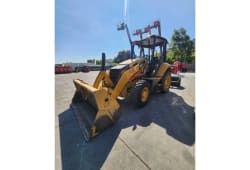How to Calculate a Regular Fuel Analysis ROI
7 Min read
)
December 30, 2022
The reliability and performance of your heavy equipment are paramount to the productivity and profitability of a company. This is why it is necessary always to keep an eye on the state of machines and ensure that they are in good working conditions, and this is where a fluid analysis comes in. One significant way to carry out a thorough test on the state of a machine is to perform a regular fuel analysis. A fuel analysis will:
One significant way to carry out a thorough test on the state of a machine is to perform a regular fuel analysis. A fuel analysis will:
Detect possible early faults
Reduce the cost of repair and replacement
Increase quality output
Improve safety
Improve the customer satisfaction
Increase the lifespan of the equipment
And, of course, increase the return on investment
Conventional ROI for fluid analysis
A return on investment gives you an estimate of how much profit or loss you have made from an investment or a project after calculating its cost. It directly measures the amount of return on an investment relative to the cost of that investment.
The general formula for ROI is as follows:
ROI=Cost of InvestmentCurrent Value of Investment-Cost of Investment
Some of the benefits of performing a conventional fluid analysis include the following:
It affects your purchasing decision
Calculating a fluid analysis on a machine will give you an estimate of the value of the equipment, and you can proceed to make the right purchase decision.
Preventing catastrophic failures - loss of core
An early analysis of the equipment will point out lurking faults in the equipment. This can easily be prevented when observed in time.
Extending component life hour
With proper and constant maintenance, you can prevent the accidental breakdown of the machine, sustaining its lifespan and keeping it in good working condition.
Extending drain intervals
Drain intervals are the time between changing the motor oil and the oil filters. Fluid analysis is the best way to safely determine an optimal drain. Faults like oil and fuel leakage can be spotted and fixed during a fluid analysis, thereby extending the drain interval of the equipment.
Adjusting maintenance strategies
Predictive maintenance can be more effective with an oil or fuel analysis by giving deep insight into the equipment performance and maintenance needs. A thorough analysis will provide a structured framework for analyzing the functions as well as the potential failures of heavy equipment. This will enable the user to make the necessary adjustments to the maintenance strategy of the equipment.
Here is a scenario of a machine failure following the lack of a fuel analysis:
A loader experiences a catastrophic engine failure at the job site
The loader is hauled to the repairer shop by recovery operations
During the inspection, the engine failed due to a blown head gasket and coolant getting into the crankcase
A chemical reaction wiped the main bearings due to corrosive wear
As opposed to this:
Major damage is done to the crankshaft of the machine
Upon analysis, it was discovered that oil drastically thickened, and this led to the seizing of the engine due to lubrication starvation
Fixing this issue will take about 2-3 days and will cost about 16k
The timeframe and cost of repairs will be less if the liners and pistons are reusable and a repair is chosen instead of a replacement
Additional Considerations for ROI
Repair vs. Rebuild vs. Replacement
The decision to either repair, rebuild, or replace components during analysis is a very important one. Repairing involves fixing only the damaged components in the equipment. Rebuilding involves refurbishing the components of the equipment to make it new. Replacement involves buying either a brand-new or a fairly used piece to replace the existing piece in the equipment.
Repairing the equipment might be the fastest way to get it in use again. This will save money for your company in production time since the disruption time will only be short. However, in most cases, repairing produces the least longevity for the equipment.
Rebuilding the equipment should restore the functionality of the component to brand new. A rebuild is best when you have several components that need to be repaired. A rebuild will extend the equipment's life more than a repair, and it will let you bypass the depreciation incurred by purchasing new equipment.
Replacement is the most expensive and can be the best option since a piece of new equipment will have little to no issues. It requires the biggest investment, and new equipment has a higher chance of depreciation.
Production Loss
Production loss is a disruption in the equipment's normal operations, which can lead to inefficiencies. This can lead to an increase in cost, and it can negatively affect the company since their productivity rate will be affected. The circumstances that lead to this disruption are not always predictable. However, with a fluid analysis, these circumstances could be detected earlier and prevented.
Recovery Operations
With a fluid analysis, you can salvage some components of heavy equipment. This saves you some costs by reducing the money that would otherwise be used to purchase new components.
Unscheduled vs. Scheduled Downtime
Equipment downtime is the period that operations will have to be on hold due to non-functioning equipment. A downtime in the heavy equipment industry can either be scheduled or unscheduled. When scheduled, the outage is planned for a specific time and scenario, and further plans are made to sustain the productivity and operations during this period of outage. This is the best kind of outage, as the company is prepared for it, and damages are prevented.
When unscheduled, the outage happens due to an unexpected equipment failure. The approach used here is more reactive to the situation. Downtime can be scheduled to conduct a maintenance process. This is referred to as preventive maintenance. Scheduled maintenance represents a strong return on investment in the form of time, money, and resources saved compared to the case of unscheduled maintenance. During scheduled maintenance, tasks like; changing filters, visual inspection of equipment components, cleaning, and control optimization can be carried out.
When downtime is unscheduled, it can be chaotic. They require a higher maintenance cost since the right people, equipment, technologies, and procedures need to be made available in a short timeframe. Reactive, unscheduled maintenance is an indication that the machines have been run down to failure. The components of the equipment must have been worn out to a critical point where they can no longer function.
Safety
When there is unplanned maintenance in the heavy equipment industry, accidents are more likely to occur.
When a piece of heavy equipment starts getting faulty, it is naturally dangerous. Even a minor issue, like a worn belt or a damaged chain, can be potentially catastrophic in the workplace. Once a piece of equipment fails in operation, the chances of accidents are very high.
Another reason why unscheduled downtime can be hazardous is that to work on a malfunctioning asset, it needs to shut down properly. In unscheduled downtime, the equipment is shut down abruptly, which can pose a potential threat to the repairer of the equipment since the equipment was abruptly shut down. This is one of the reasons for the designs of Lock-out Tagout (LOTO). LOTO procedures are designed to ensure that broken equipment is properly shut down and ready to be worked on.
To reduce the risk of injuries sustained on the job, unplanned maintenance must be reduced. To reduce unplanned maintenance, a constant effort will have to be put into increasing the number of planned maintenance.
Environmental impact
A fuel analysis will have an impact on the environmental condition. When detected early, bad oil filters can be changed, and oil can be replaced. This will prevent irregular oil spills from the equipment, which can be harmful to plants, animals, water, soil, and humans.
Benefits of Calculating Fuel Analysis ROI
Calculating your return on investment in the heavy equipment industry is very important. Here are some benefits of this calculation:
Justification for future maintenance reliability.
Improve reliability: Everyone needs equipment that they can rely on. One way to calculate your reliability score is to carry out ROI calculations. This will give you the general value of the equipment, as well as its worth. You will know if it is worth purchasing the equipment in the first place.
Ability to properly capture cost savings.
Create buy-in.
Recognize your personal and the team's efforts in cost savings.
Career advancement.
Here's a table summarizing the key points from the article "How to Calculate a Regular Fuel Analysis ROI":
:format(webp))














